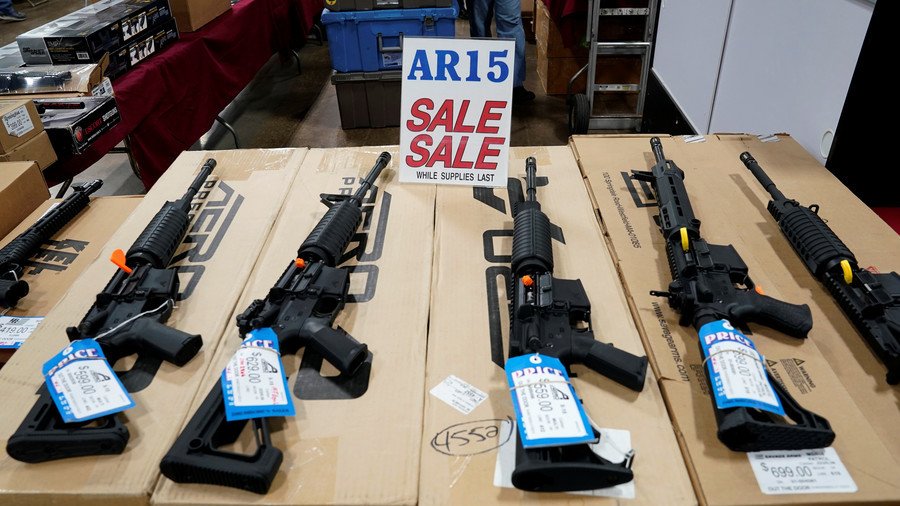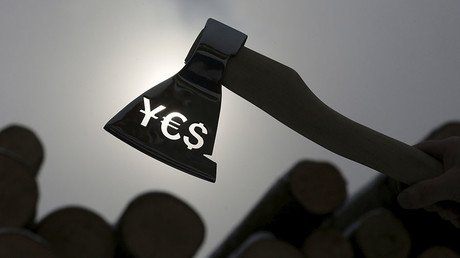From Ritalin to Marilyn: Forget gun laws, what else is being blamed for mass shootings?

The blame for mass school shootings in America has fallen on some unlikely shoulders amid the ongoing gun control impasse. From Ritalin to Marilyn Manson, here are some of the most memorable factors blamed for school attacks.
Eight students and two teachers were shot dead at Santa Fe High School in Galveston, Texas on Friday; 17-year-old student Dimitrios Pagourtzis has been arrested over the mass shooting. Speaking about the attack, the National Rifle Association’s incoming president Oliver North condemned what he called America’s “culture of violence” and blamed Ritalin, the drug used to treat attention deficit hyperactivity disorder (ADHD), for making children violent.
Reports of multiple deaths in #Texas school shooting, officer injured https://t.co/BuOPqLNUPDpic.twitter.com/XuTUI3lMAB
— RT (@RT_com) May 18, 2018
“The disease in this case isn’t the Second Amendment. The disease is youngsters who are steeped in a culture of violence,” he told ‘Fox News Sunday.’ “They’ve been drugged in many cases. Nearly all of these perpetrators are male.”
As Ritalin makes the list of products and people blamed by gun activists for another US mass shooting, here are some of the other recent – and perhaps unlikely – reasons for attacks on schools.
Too many doors....
Meanwhile, addressing the Santa Fe tragedy, Texas Lieutenant-governor Dan Patrick proposed that there are simply too many entrances and exits in schools, making it nigh on impossible to guard against gun-wielding attackers.
“Had there been one single entrance possibly for every student, maybe he would have been stopped,” Patrick said. His comments were lambasted on social media as users pointed out that being able to exit a building quickly is acutely important for fire safety.
READ MORE: ‘Door control is the real issue’: Twitter reacts to Texas high school massacre
It’s video games…
After shooting his mother dead with her own gun on December 14, 2012, 20-year-old Adam Lanza walked into Sandy Hook Elementary School in Newtown, Connecticut, and opened fire on students and staff. During his shooting spree, Lanza killed 20 children between six and seven years old as well as six adult staff members. He later committed suicide by turning the gun on himself.
‘I will not let you down’: Trump promises NRA he’ll end gun-free zones, attacks Clintonhttps://t.co/aHD9iAc7VGpic.twitter.com/6K7ZaQR0e7
— RT America (@RT_America) May 21, 2016
As people struggled to comprehend Lanza’s motives for the crime, Wayne LaPierre, CEO and executive vice president of the NRA, pointed the finger squarely at video games, in particular an online flash game called ‘Kindergarten Killer.’ In the game, players have to first kill the teacher before then shooting small children, who are armed, and the kindergarten principal.
While the game had been on the internet since 2002, there was no evidence that the Sandy Hook shooter ever played it. A final report into the shooting also stated that while Lanza played both violent and non-violent video games, it was said he spent the majority of his time playing benign arcade classics like ‘Super Mario Brothers’ and ‘Dance Dance Revolution.’
It’s music…
After 18-year-old Eric Harris and Dylan Klebold, 17, murdered 12 of their fellow students and one teacher at Columbine High School in Colorado in 1999, debate over gun control laws were countered with cultural quandaries on bullying and the impact of violent music and movies on teenagers.
FBI repeatedly failed to address online ‘Columbiner’ culture that glorifies mass shootings https://t.co/HrDEf7Zpu3
— RT (@RT_com) February 18, 2018
One of the targets was heavy metal artist Marilyn Manson. In the aftermath of the massacre, students reported that both Harris and Klebold were fans of Manson and modeled their gothic look of white makeup, dark hair and trench coats on the singer. Manson later said his links to the massacre – which were eventually proven false as neither shooter was actually a fan of the singer – almost ended his career.
In an interview with filmmaker Michael Moore, Manson said he believed he had become a political scapegoat. “The two byproducts of that whole tragedy were violence and entertainment and gun control, and how perfect that they were the two things we were going to talk about in the upcoming election,” he said.
It’s a gun shortage…
In the aftermath of mass shootings, the idea is often pushed that a school without guns is a soft target for those with bad intentions as it potentially offers vulnerable victims in a confined setting without attackers worrying about being taken down themselves. Essentially, the argument is that there aren’t enough guns in the right hands.
After the fatal shooting of 14 students and three staff at Marjory Stoneman Douglas High School in Parkland, Florida, talk turned to the possibility of arming teachers. “If you had a teacher who was adept at firearms, they could very well end the attack very quickly,” said US President Donald Trump during a listening session in the Oval Office with the victims of the shooting.
I never said “give teachers guns” like was stated on Fake News @CNN & @NBC. What I said was to look at the possibility of giving “concealed guns to gun adept teachers with military or special training experience - only the best. 20% of teachers, a lot, would now be able to
— Donald J. Trump (@realDonaldTrump) February 22, 2018
The suggestion provoked massive amounts of debate. The idea has now been entered into proposed legislation in Florida. Under the School Marshall Program, teachers would undergo training with the local sheriff’s department with the ultimate aim of having 10 armed teachers in every school. The proposal means there would be an extra 37,000 more guns statewide, according to the Tampa Bay Times.
It’s the media...
The idea that the media’s coverage of school shootings is to blame is also pervasive. In February, the NRA released a video via its social media channels in which gun rights activist Colin Noir declares, “The media loves mass shootings”, adding, “No-one on this planet benefits more from mass shootings and motivates more people to become mass shooters than our mainstream media.”
Research suggests there is some truth to Noir’s point. In July 2015, a study from Arizona State researcher Sherry Towers found that mass killings are more likely to happen in clusters and within short periods of time. The study suggests that shootings spread like a contagion, when one person sees a media report they then concoct their own plan – although whether that person should have easy access to guns is a separate issue entirely.
Think your friends would be interested? Share this story!














